Petrykivka Painting
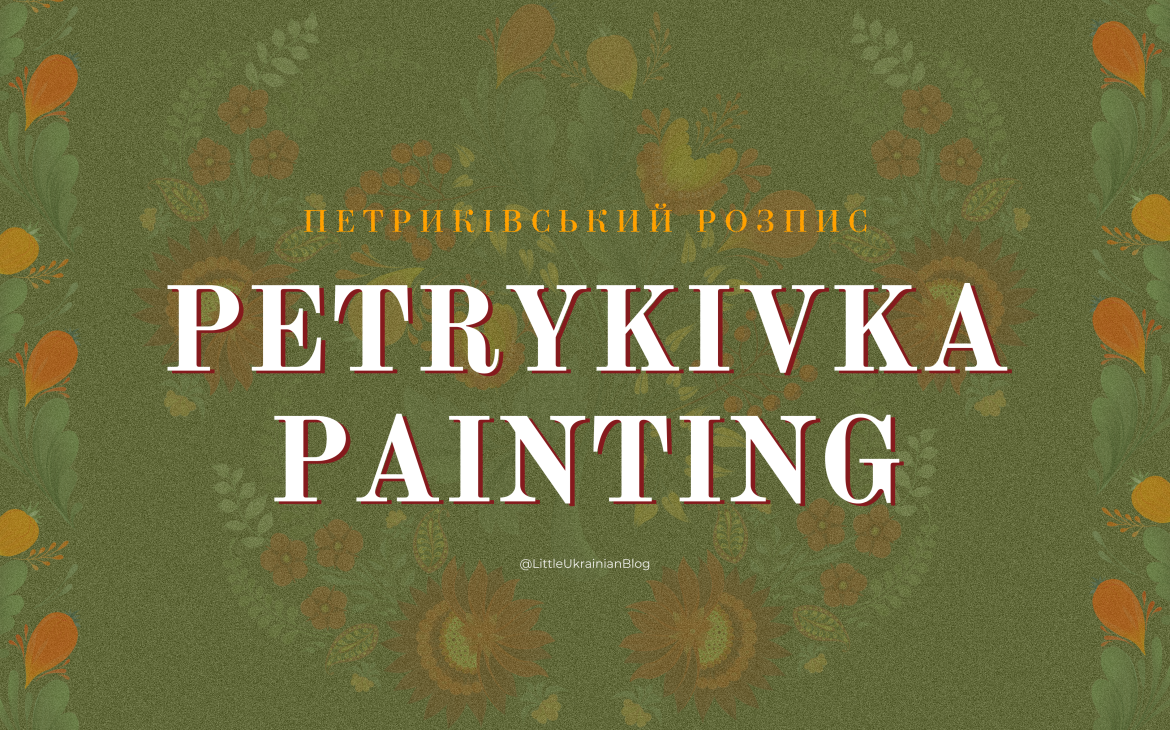
Petrykivka painting is one of those art forms that always makes me smile. It’s rooted deep in Ukrainian culture, and it’s both beautiful and full of character. This unique folk art style uses intricate floral motifs and imaginative designs that mirror our nation’s rich history and diverse culture. Let’s talk about where it comes from, how it works, and why it still holds such significance in Ukraine today.
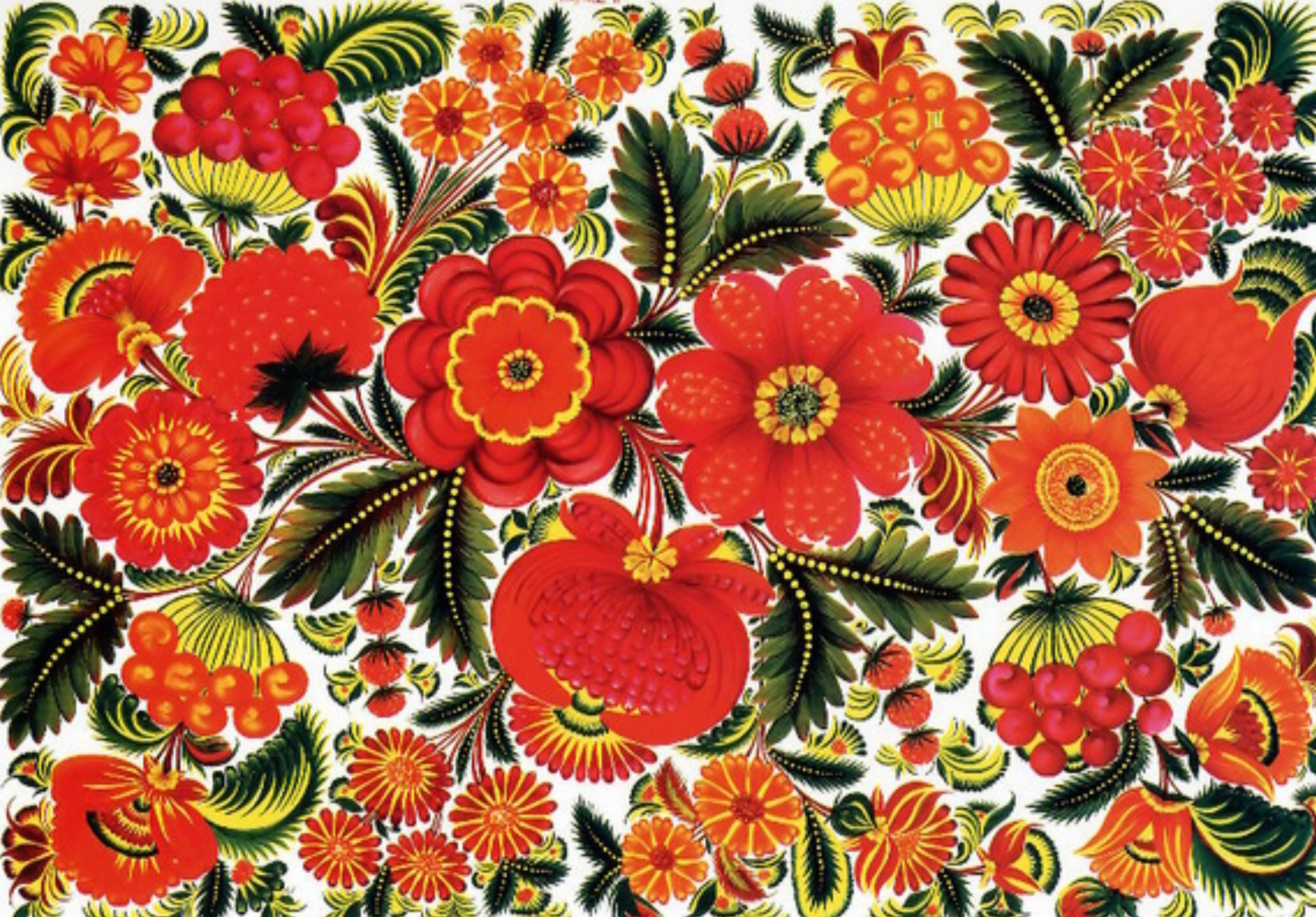

History
Історія
Petrykivka Painting has a rich history deeply rooted in Ukrainian culture. Its origins can be traced back to mural decorations on village houses, which were common throughout Ukraine, with each oblast having its unique style. These decorative traditions extended to wooden household items like chests and the development of мальовки (mal’ovky) pre-painted designs on paper that could be applied to walls. While the earliest known floral ornamentation dates from the 19th and early 20th centuries in various Ukrainian regions, Petrykivka village stood out as a prominent hub for this art.
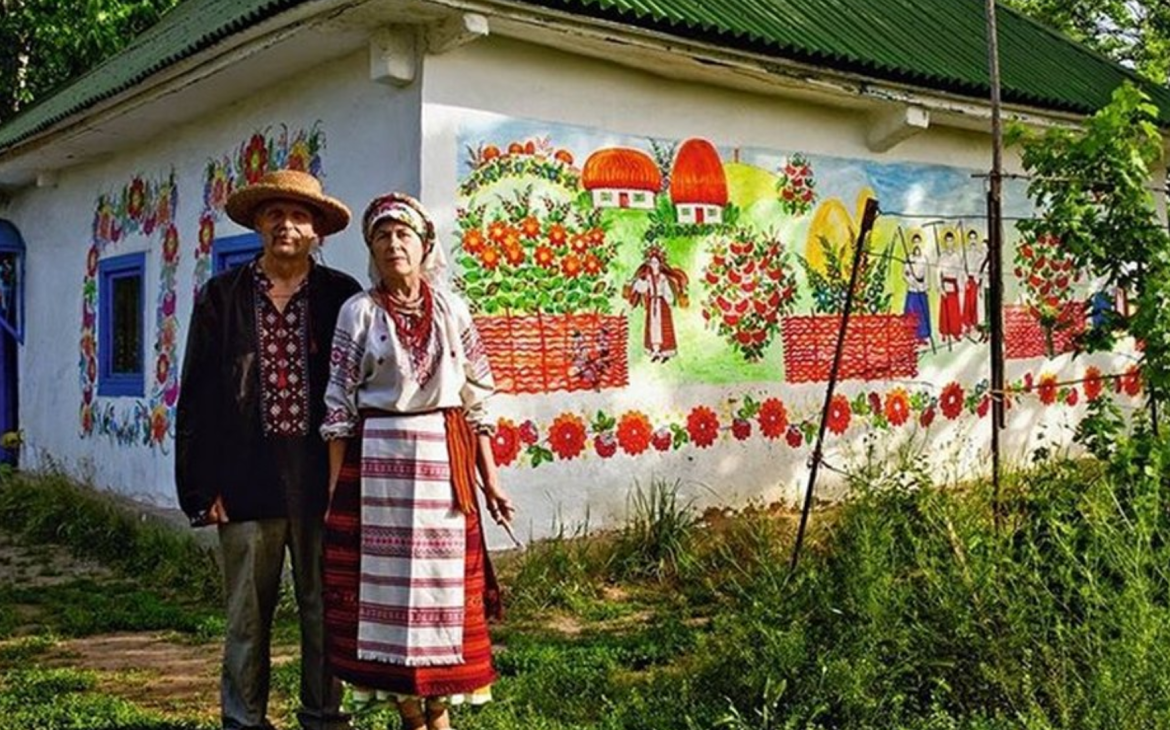
Petrykivka village
Петриківка
Petrykivka is a village located in the Dnipro oblast, Ukraine, and holds a special place in the history of Petrykivka Painting. It is not only the namesake of this distinctive folk art style but also its birthplace. The village’s artistic tradition dates back to at least 1860, with its murals and works on paper marking the early emergence of this vibrant and imaginative form of expression.
Today, Petrykivka remains a hub of creativity and a cultural epicentre for artists and enthusiasts alike, preserving and evolving this cherished Ukrainian heritage. The village also hosts the Petrykivka Folk Art Centre museum dedicated to the painting.
This style of painting started gaining recognition in the early 20th century, thanks to the efforts of ethnographers like Dmytro Yavornytsky and Yevhenia Berchenko. The painting style saw a significant boost in the 1930s with exhibitions and schools dedicated to its preservation and development. In the following decades, it found its way into industrial production – including porcelain decoration – and became a symbol of Ukraine’s cultural heritage.
In recent years, it has continued to thrive, with official recognition as part of Ukraine’s intangible cultural heritage and a coveted spot on UNESCO’s Representative List of the Intangible Cultural Heritage of Humanity. The Petrykivka Center of Folk Art (there in the village) plays a pivotal role in keeping this tradition alive. There is also an annual festival, known as “Petrykivs’kyi Dyvotsvit”, which celebrates the art form and its community, showcasing markets, workshops, exhibitions, and concerts, while promoting its cultural significance. It’s a real celebration, not just of art but of the people who make it.

Characteristics and Techniques
Особливості та техніки
At its heart, Petrykivka painting is a celebration of nature, particularly plants and flowers. Artists take inspiration from what they see around them – garden flowers (tulips, roses, dahlias), wildflowers (chamomile, cornflowers), and other plants (viburnum berries – Kalyna, strawberries, and grapes) – transforming them into imaginative designs that feel alive and full of colour. The images are often stylised rather than realistic, blending natural forms with fantasy. Alongside flowers, it’s common to find birds, animals, and even people painted in a light-hearted, decorative style. The Phoenix appears often too, representing happiness and renewal in Ukrainian mythology.
This style favours a flat, two-dimensional style, with little realism. The main focus of these artworks is typically one or more plant stems, which serve as the foundation for all the important elements in the composition. These stems or branches usually don’t overlap, and many elements appear as silhouettes. Birds, animals, and people are typically shown from the side, while flowers are often portrayed head-on, creating a distinctive and imaginative look.
Types of Strokes and Tools
Типи мазків і знаряддя праці
There are four main types of brush strokes used in Petrykivka Painting:
A brush stroke that begins with a heavier pressure and thicker line, and ends with a lighter touch and thinner line. Such strokes together resemble the teeth of a comb, hence the name.
The so-called “seed” stroke is the reverse of the “comb”, with initial light and final heavy pressure. When “seed” strokes are placed on each side of a stem, the image resembles an ear of wheat, resulting in the name.
The “nut” stroke consists of two “comb” strokes, which are curved and face inwards to one another. Once the resulting negative space is filled with a “seed” stroke, the finished product resembles a hazelnut.
Transitional strokes are created by using a single brush with two differently coloured pigments.
Pigments were traditionally extracted from herbs, leaves, berries, and flowers. Red was made from cherry juice, green from grass or nightshades, and blue from snowdrop flowers. Different shades of yellow were obtained from sunflower petals, onion skins, and the bark from apple seedlings. Artists would thin pigments with egg yolk or milk, and fix them with cherry sap or sugar from sugar beets. Synthetic dyes were not introduced until much later, and it was only during the post-war period that water colours and gouache became more commonly used.
The tools used were also of a natural origin. Ukrainian artists created the brushes from tree shoots and stems of marsh grasses (particularly rushes and cattails). Cat hair was traditionally used for the bristles of the brush, which was collected from trimming hair off the chest and paws of the animal.

Famous Artists
Відомі художники
Василь Іванович Соколенко (Vasyl Ivanovich Sokolenko): was a Ukrainian Petrykivka painter who was awarded as an Honoured Master of Folk Art of Ukraine.
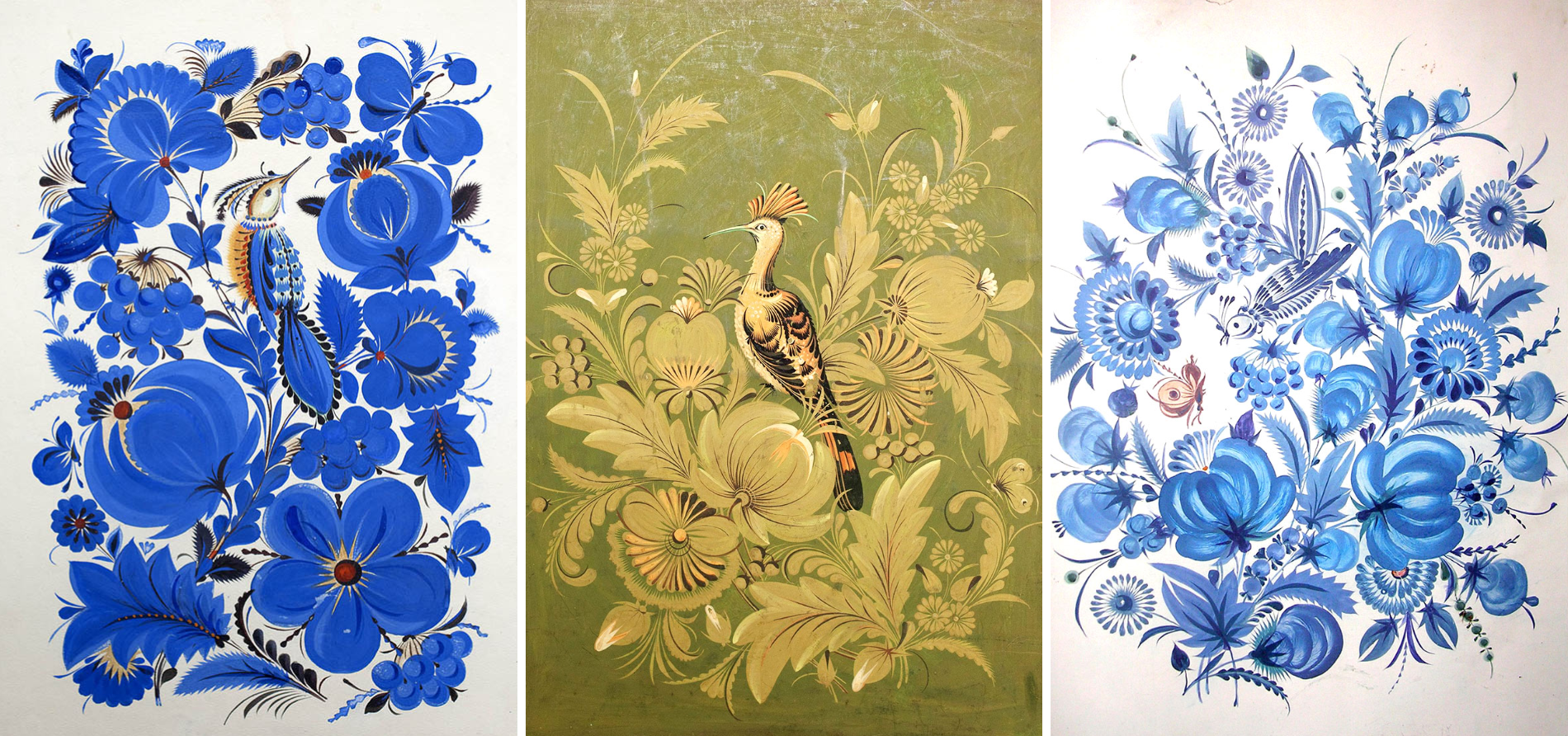
Тетяна Пата (Tatiana Pata) decorated houses and chests with plant patterns, painted murals for commercial buildings, and designed kilims, books, and postcards. Among her best-known works are Cuckoo on a Viburnum (1950), and Bird and Grapes (1958). She also taught at the Petrykivka School of Decorative Art and trained many Petrykivka painters.

Володимир Глущенко (Volodymyr Hlushchenko) remains one of the most well-known Petrykivka artists from Ukraine. He holds the esteemed title of Honoured Master of Folk Art of Ukraine, a distinction he has held since 1968, and he has been a member of the National Union of Artists of Ukraine since 1977.
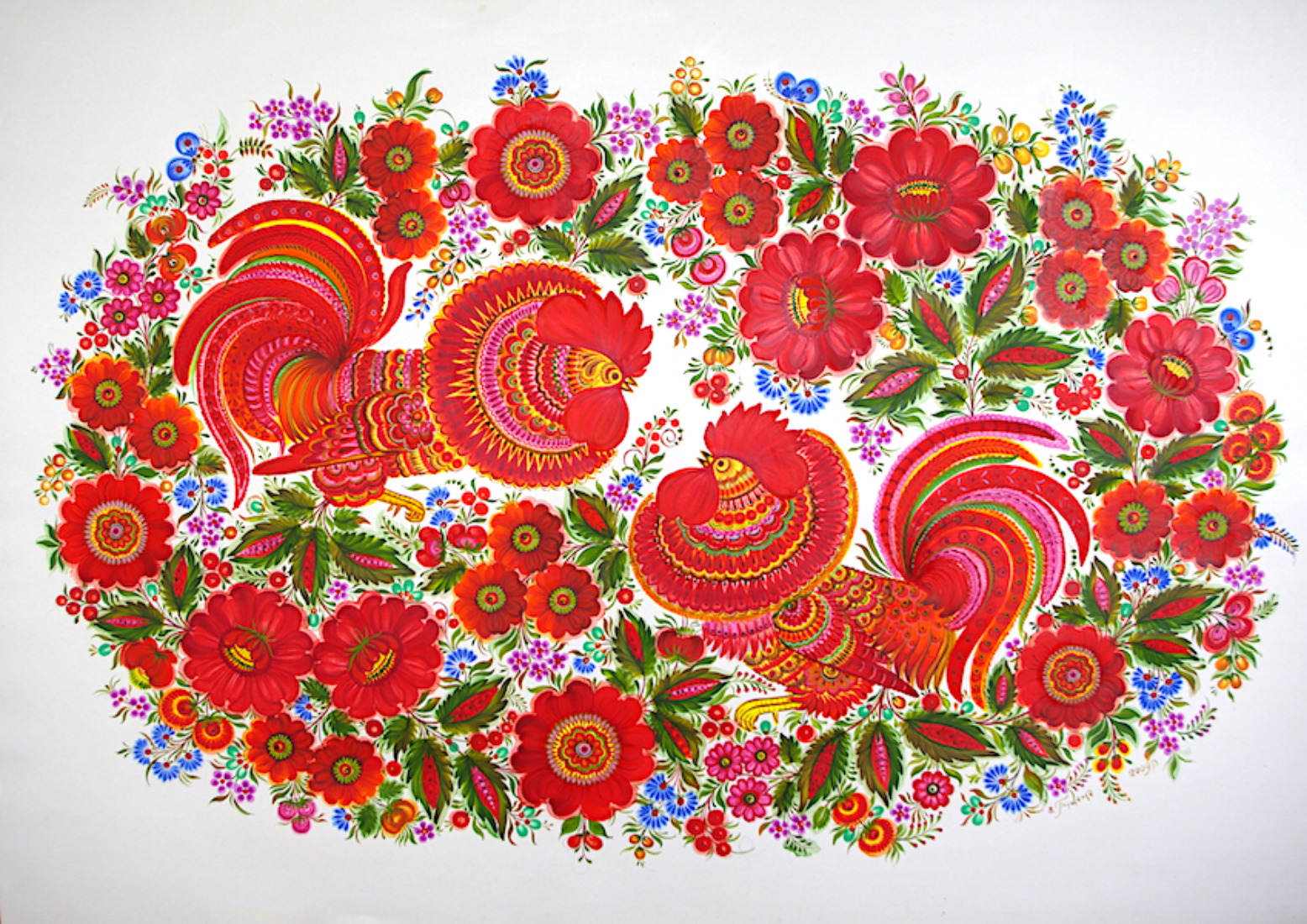

We hope you enjoyed this blog post about Petrykivka painting!
To stay in the loop and explore more of Ukrainian culture and traditions, be sure to connect with us on social media, where you can share and discuss your favourite aspects of Ukrainian culture with friends and family.
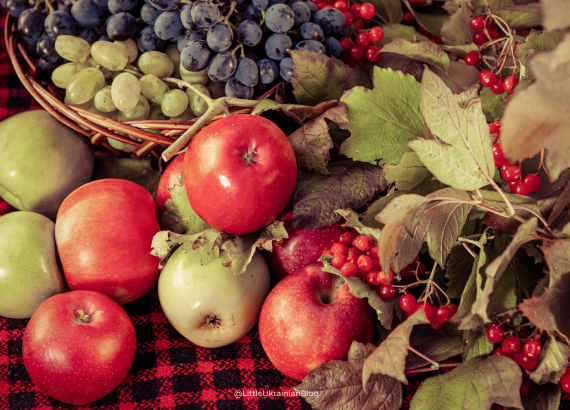

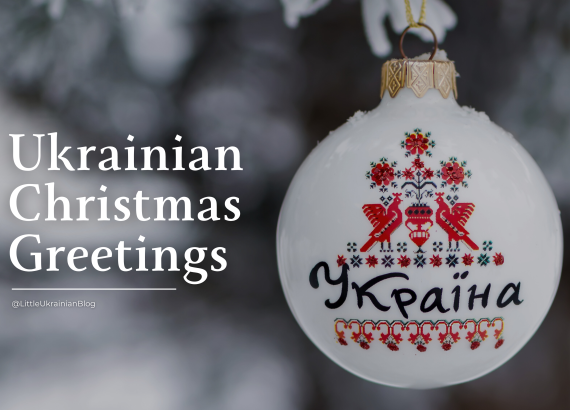
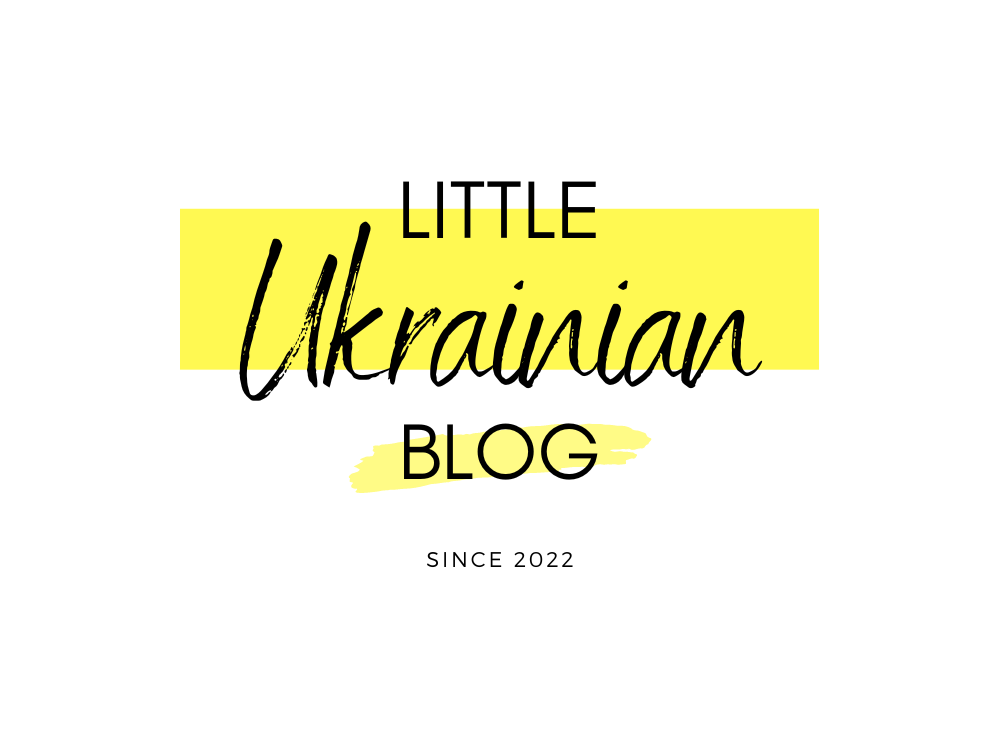
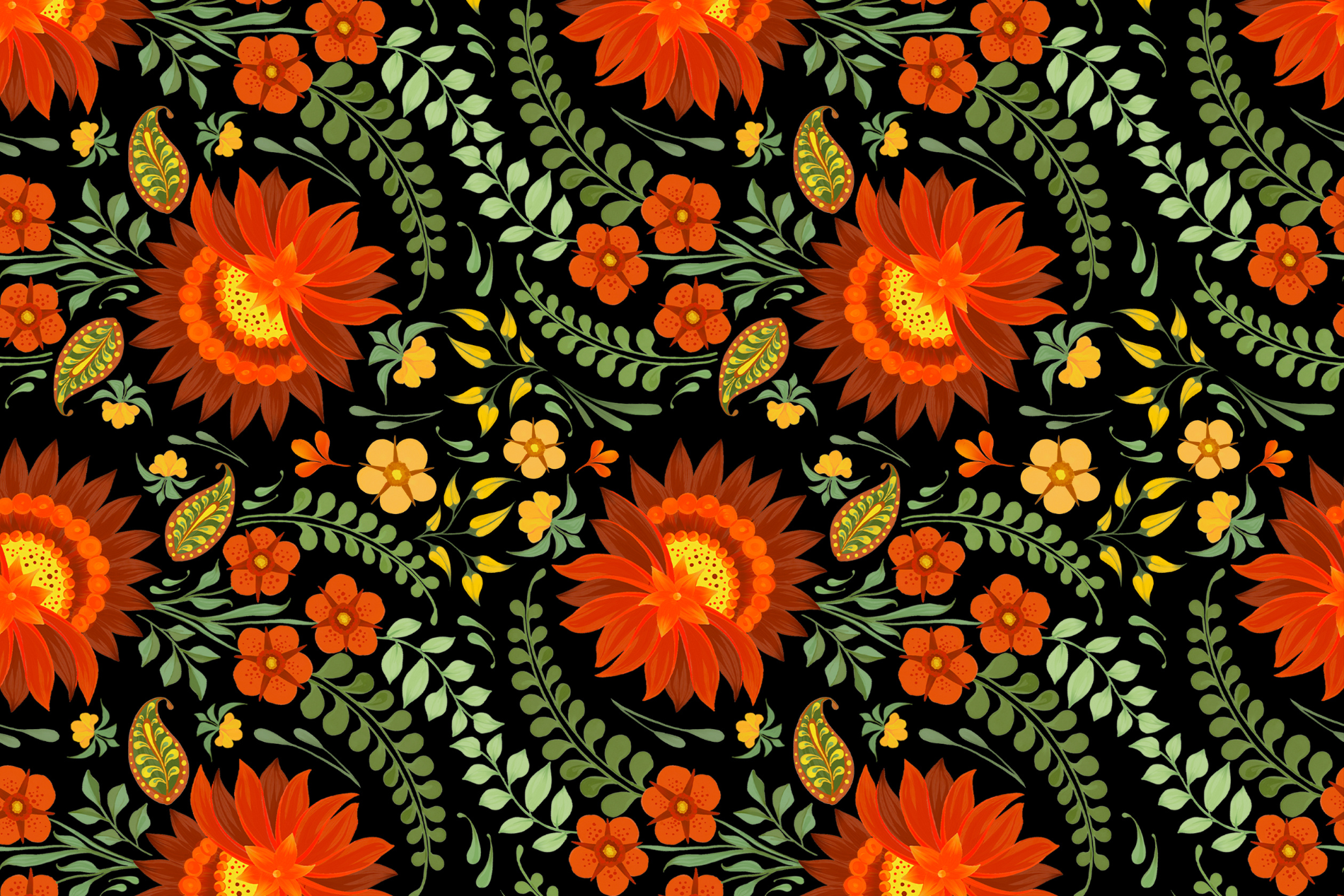
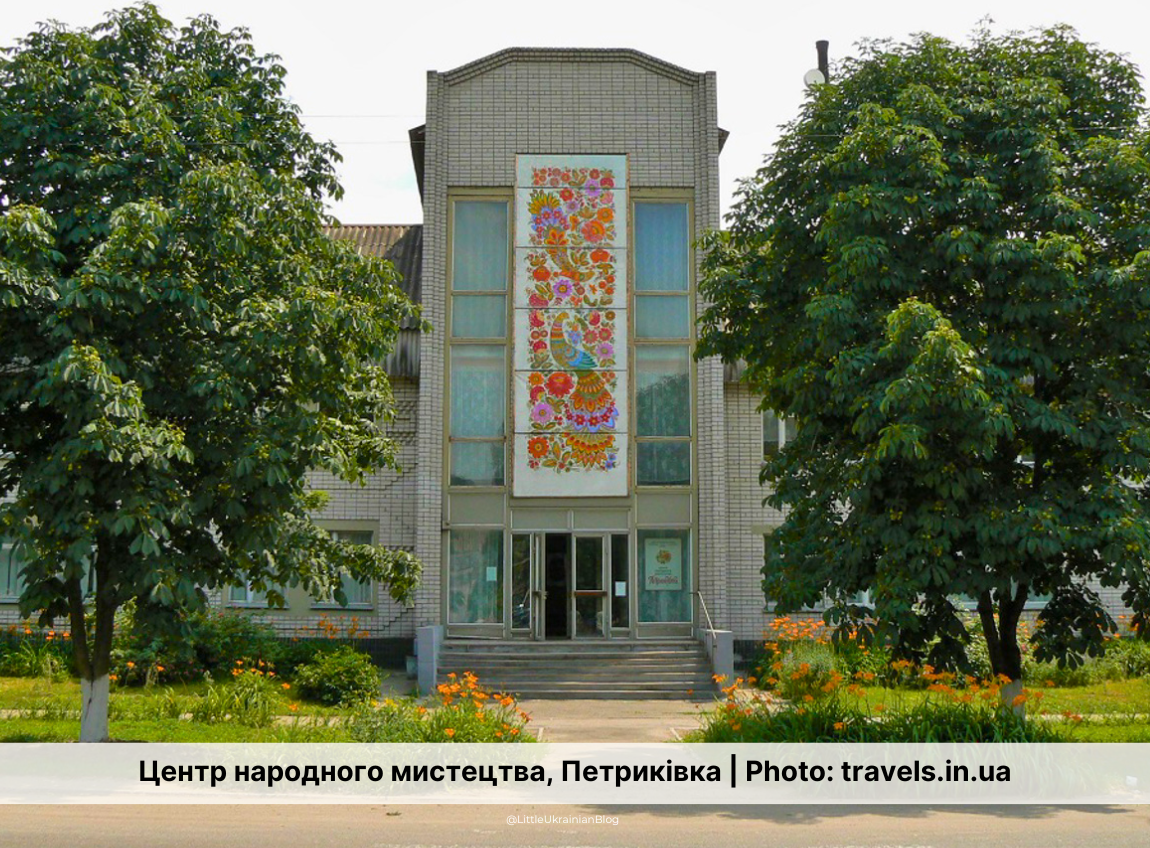
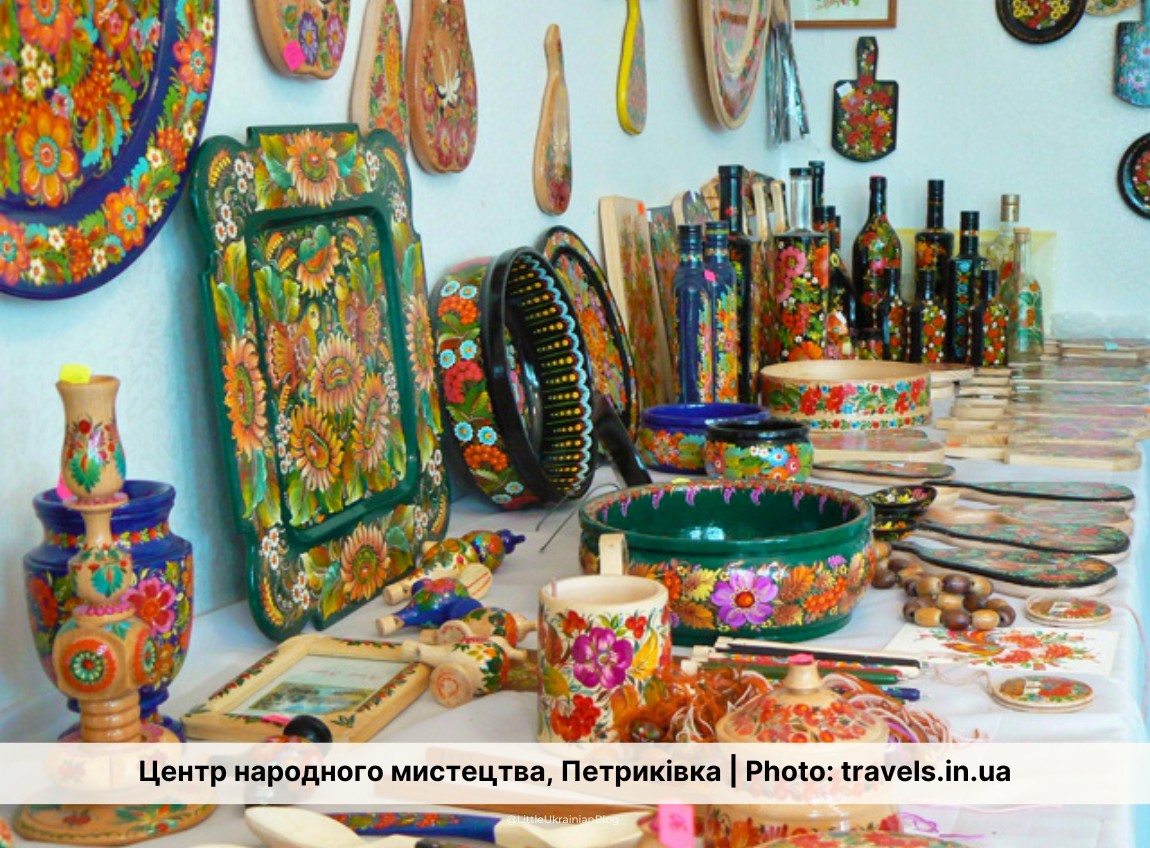
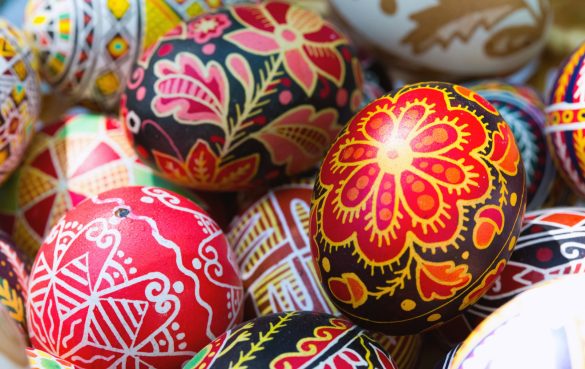
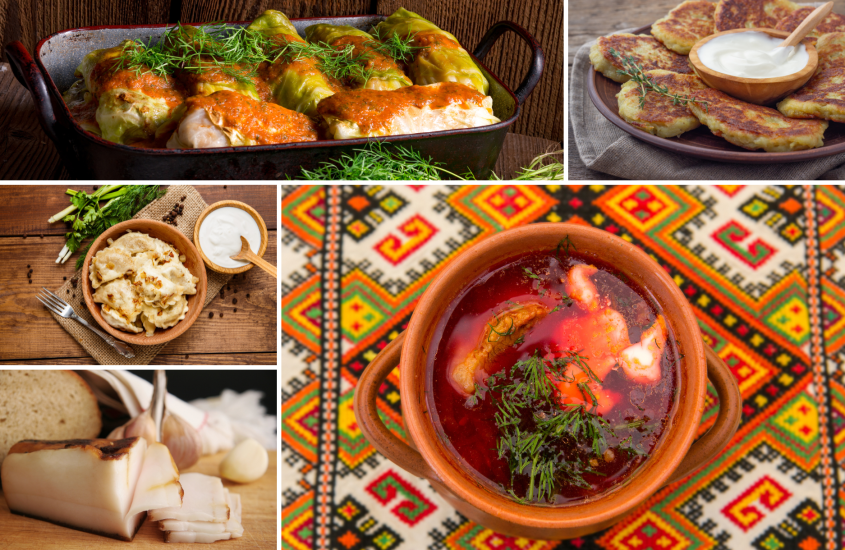
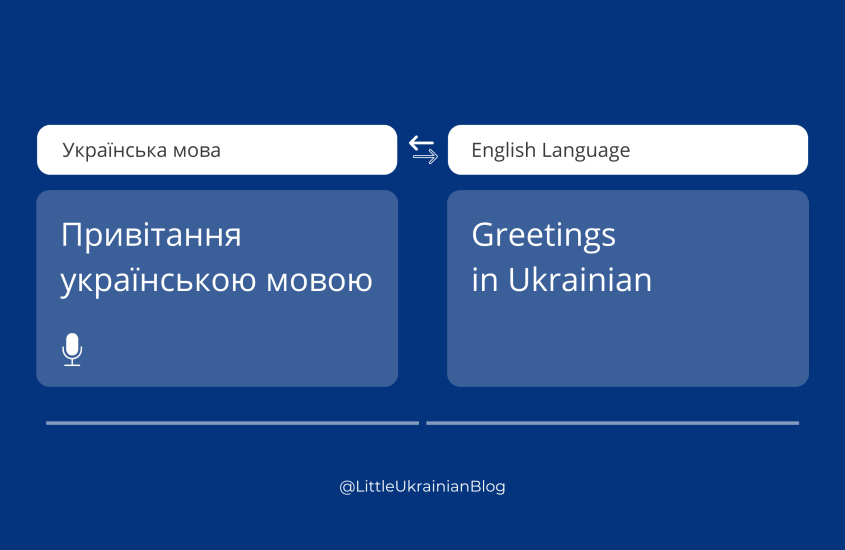
OLENA CHORNA
Petrykivka village is located in Dnipro Region not in Donetsk Region. Please correct. Thank you